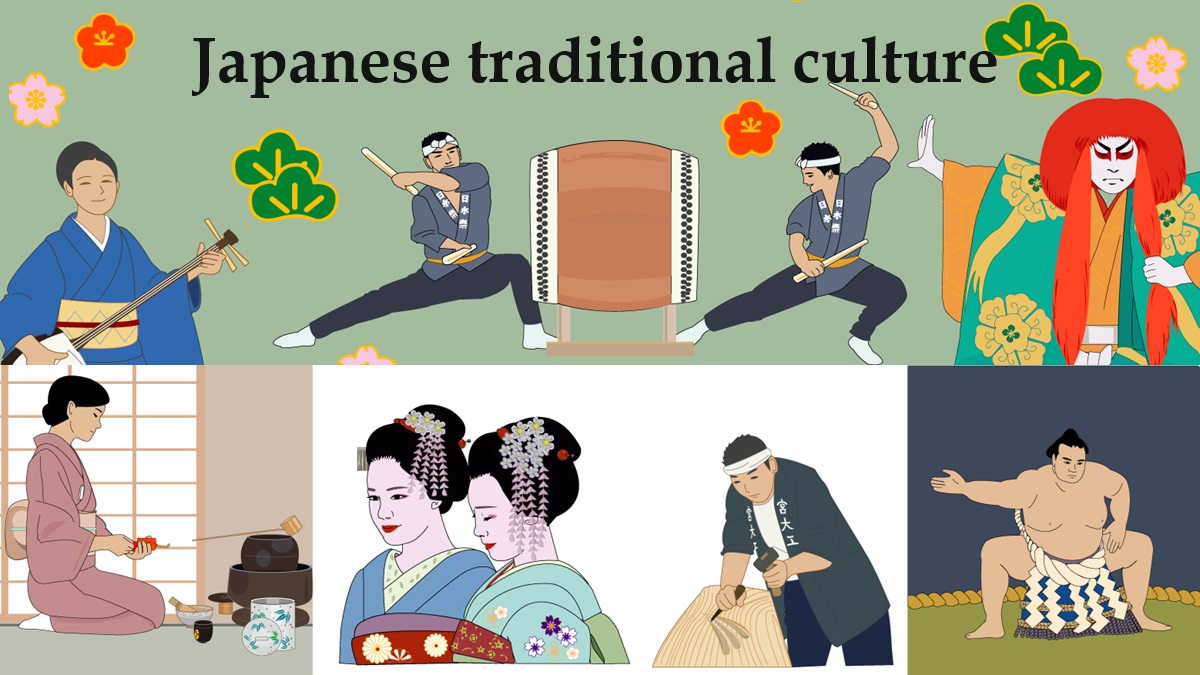Japanese traditional culture
Kimono Samurai & Ninja Geisha & Maiko Japanese Drum Kabuki, Noh & Bunraku Tea Ceremony Calligraphy Flower Arrangement Sumo
Kimono
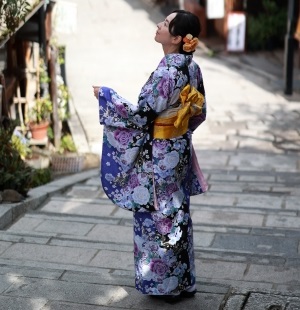
Kimono is Japanese traditional clothing.
Know about Kimono in the following page.
Now, most Japanese people wear Kimono as special cloths only on ceremonial occasions.
Gorgeous kimono is worn throughout the year, but thin and simple Yukata is worn casually in summer.
By the way, only around 20% of Japanese people can wear Kimono by themselves.
And, only about half of the people can wear Yukata by themselves.
So, most people have kimono dresser in major hair salons and kimono rental shops wear favorite kimono.
Popular old towns with Kimono rental shops
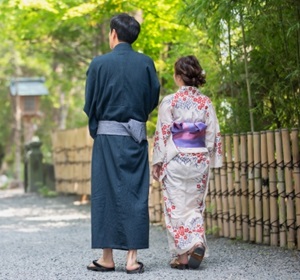
Yukata in summer
Eastern Japan
Central Japan
Kanazawa (Ishiwaka Pref.) Inuyama (Aichi Pref.) Takayama (Gifu Pref.)
Western Japan
Kyoto Nara city (Nara Pref.) Kurashiki (Okayama Pref.) Kurayoshi (Tottori Pref.) Matsue (Shimane Pref.) Kitsuki (Oita Pref.) Hita (Oita Pref.)
Samurai & Ninja
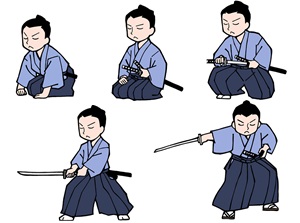
Samurai had been the ruler and officer of Japan until about 150 years ago.
Ninja had been the secret agent employed by samurai.
Know about Samurai and Ninja in the following page.
The spirit of Samurai have been inherited as morality of Japanese people unconsciously.
It may be thought that social behavior of Japanese people surprising foreign people is based on that.
But, if you want to enjoy the spot about Samurai and Ninja as entertainment, there are the following spots.
Spots with performance of Samurai and Ninja
Edo Wonderland (Tochigi Pref.) Oshino Shonobi-no-Sato (Yamanashi Pref.) Toei Kyoto Studio Park (Kyoto Pref.) Nagoya Castle (Aichi Pref.) Kumamoto Castle (Kumamoto Pref.)
Birthplaces of real Ninja
Iga city (Mie Pref.) Koka city (Shiga Pref.)
Experience of Samurai and Ninja
Tokyo
Kyoto
Traditional music & dance, Geisha & Maiko
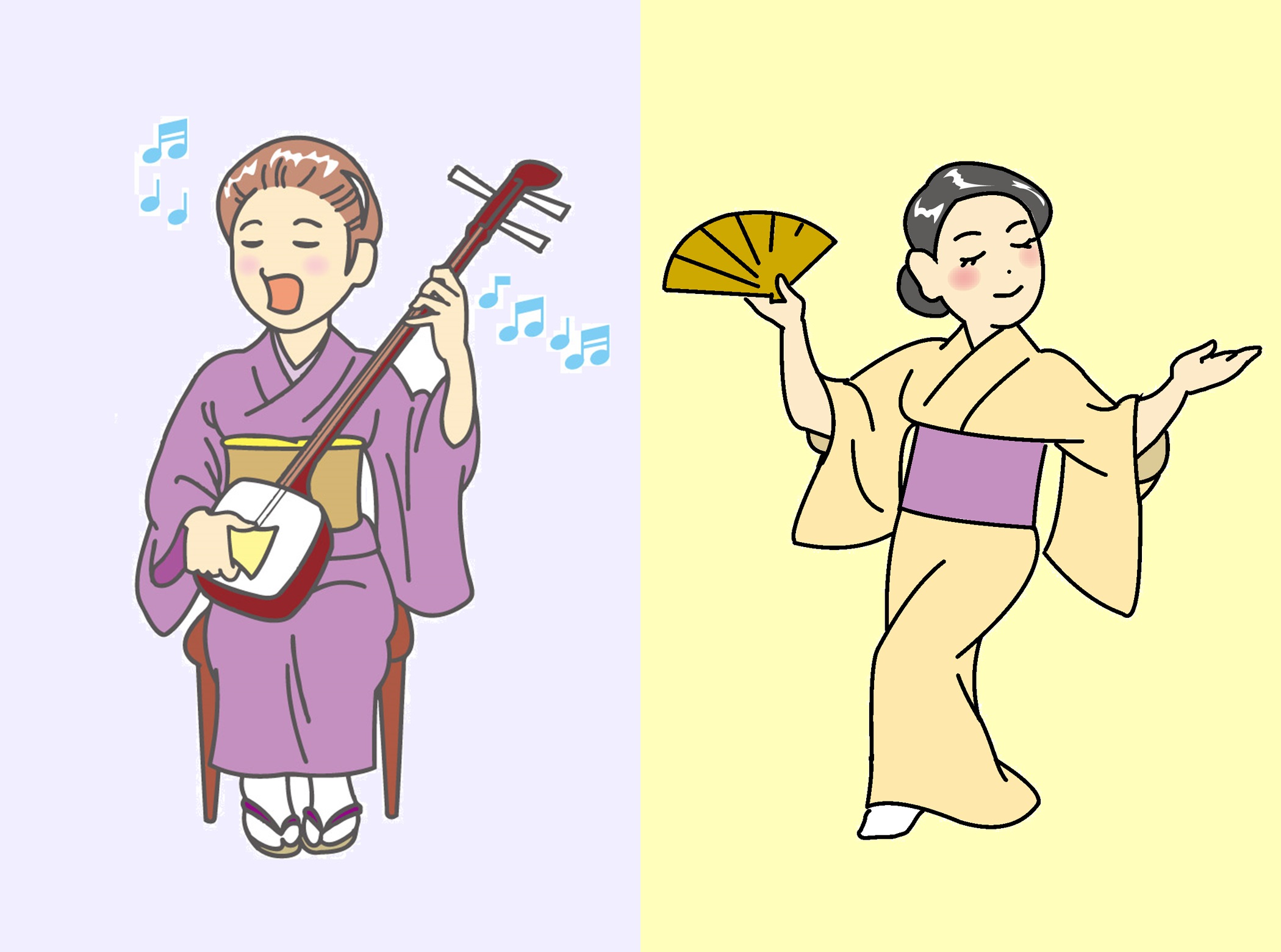
Now, the towns in Japan is overflowing with pop music and dance of Japan and the world.
But, real Japanese traditional music and dance are also alive.
They have been preserved in many traditional places, traditinal events, local festivals and Japanese performance arts.
And, Geisha and Maiko are the professional women to show the performance of Japanese traditional dance and music in front of guests.
Know about Japanese traditional music and dance, and Geisha and Maiko.
Wadaiko (Japanese drum)
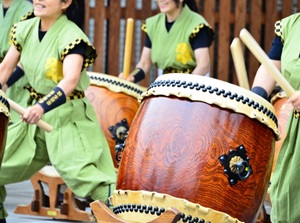
Wadaiko is Japanese drum, and it has been used as one of Japanese musical instruments.
A cut log is hollowed out, and the skin is fixed with tacks.
The player beats the skin using two wooden sticks.
The wooden body is also beaten as one of the sound.
Especially, the big drum make a powerful and stimulating bass sound with distinct reverberation.
Since the 1950s, the teams of Wadaiko to play artistically have appeared in the traditional local festivals and events.
The music is only the sound and rhythm of drum, but the variation of power and speed make a music.
The synchronized performance of the players is also attractive.
They have become a new Japanese traditional culture.
You may meet the performance in any festival and event in Japan.
And there are some experience spots.
Traditional performing arts
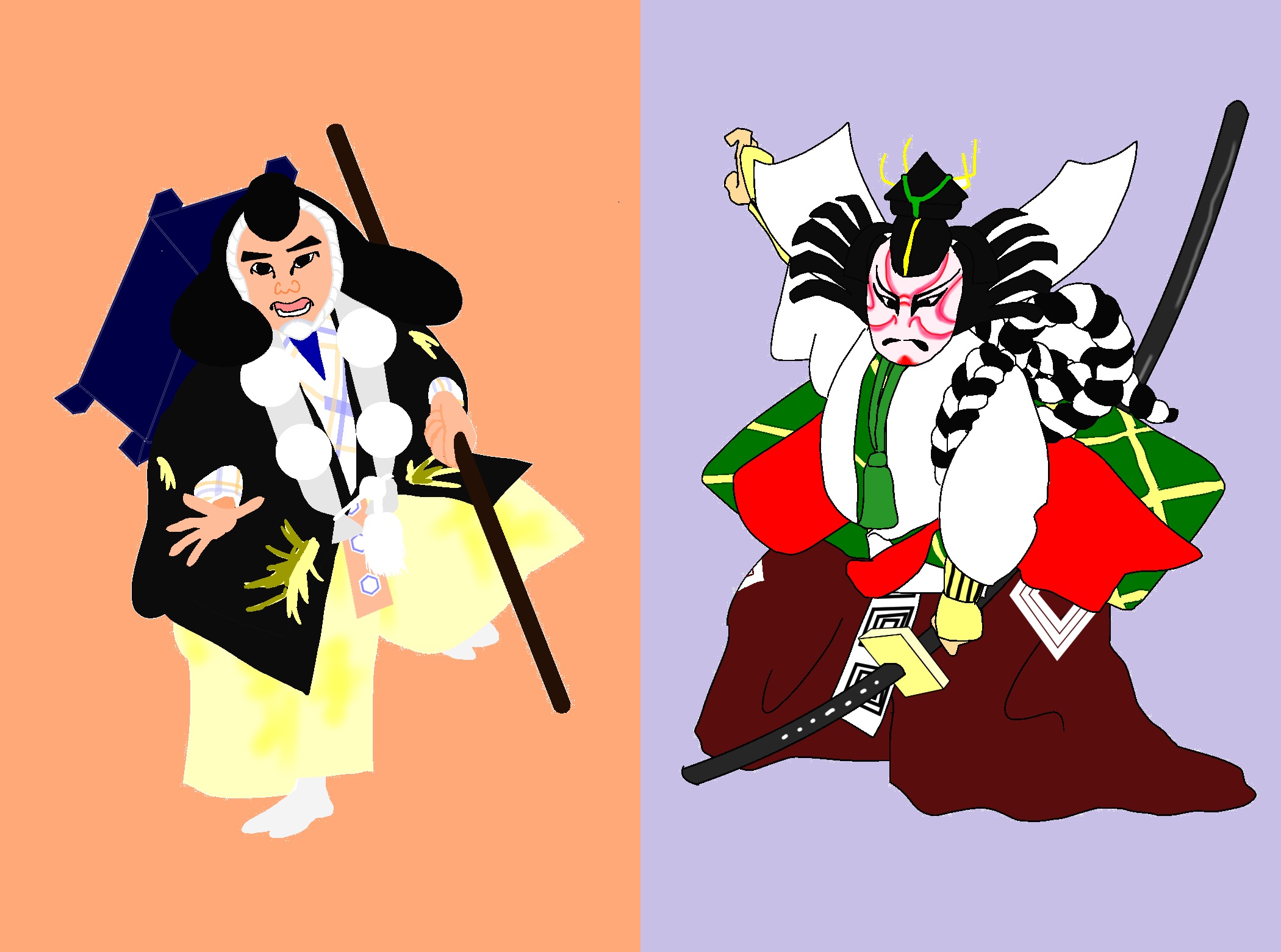
In Edo Period, the following performing arts were created and developed.
They include the above traditional music and dance as the important element.
All of them are recognized by UNESCO as intangible cultural heritages.
Kabuki
Kabuki is a stage play mixing dramatic performance with traditional dance and music.
The scale of the stage set is large, and the performances of the actors are dynamic and attractive.
Kabuki performance is held in major cities throughout the year.
The central theater is Kabuki-za in Tokyo.
Noh & Kyogen
Noh & Kyogen are slow dance performing arts.
Noh plays various historical dramas, and Kyogen plays comical dramas.
The roofed stage is small and simple, and the audience saw the performances outdoors.
Bunraku (Ningyo-Joruri)
Bunraku is a puppet drama, and is also called Ningyo-Joruri.
It had developed in Osaka.
A puppet is operated by three puppeteers behind it.
A narrator tells the drama with music and each puppet plays a roll.
There is National Bunraku Theatre in Osaka.
And Tokushima city in Shikoku Island is also famous for Ningyo-Joruri.
Tea Ceremony
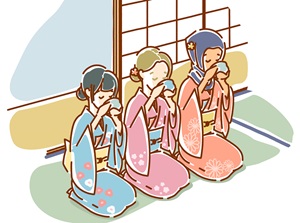
Tea Ceremony is one of special traditional events in Japan.
It is a ceremony that a host makes a tea and entertains the guests according to defined manner.
It is not a lively party.
It is a ceremony to calm own mind and receive the hospitality in silence.
The manners include the spirit of samurai.
Most Japanese people don't know the formal way of tea ceremony.
If we want to join a tea ceremony, we must learn the rule of it.
Japanese Calligraphy
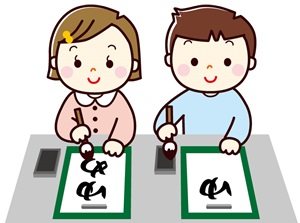
Until the late 19th century, writing materials had been mainly brush and black ink.
Now, pencil, mechanical pencil, ballpoint pen are the main writing materials.
But, traditional brush-using calligraphy is also taught in elementary and junior high schools in Japan.
In everyday life, writing using brush is rare, but signature in various ceremony is sometimes requested to write by brush as a matter of courtesy.
On the other hand, the works by professional calligrapher are one of Japanese arts.
Writing with brush is creating an artistic work for Japanese people.
Most Japanese people want to develop more beautiful handwriting.
Japanese flower arrangement
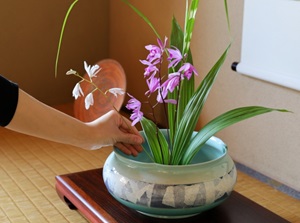
Western flower arrangement is to arrange a lot of colorful flowers symmetrically, beautifully and gorgeously.
On the other hand, Japanese flower arrangement is to make an artistic space around only a few kind of plants such as flowers, blossoms, leaves, branch of tree, etc.
As an art, various schools of Japanese flower arrangement have been established since ancient times.
The people who learned the flower arrangement from a school can create own work freely.
Spots to experience Tea Ceremony, Calligraphy, Flower arrangement, etc.
Sumo
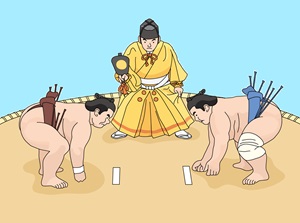
Sumo is a traditional Japanese sport, and it is a wrestling with very simple rule.
Two naked men with only a loincloth fight on the round ring.
To put the opponent out of the ring,
To make a part of the opponent's body except bottom of foot touch the ground,
By either of them, the wrester wins.
So, a match finishes only in some seconds, but the fight is exciting.
Sumo was a competition for strengths as a ceremony for a fortune about a good or bad harvest in the ancient times.
After that, it became a show of tournament by professional wrestlers in the 17th century.
The wrestler, performance, ceremony, etc. still keep the traditional style.
The home arena is Ryogoku Kokugikan in Tokyo.
The grand tournaments for 15 days are held there in January, May and September.
And, they are also held in Osaka in March, in Nagoya in July, in Fukuoka in November.

